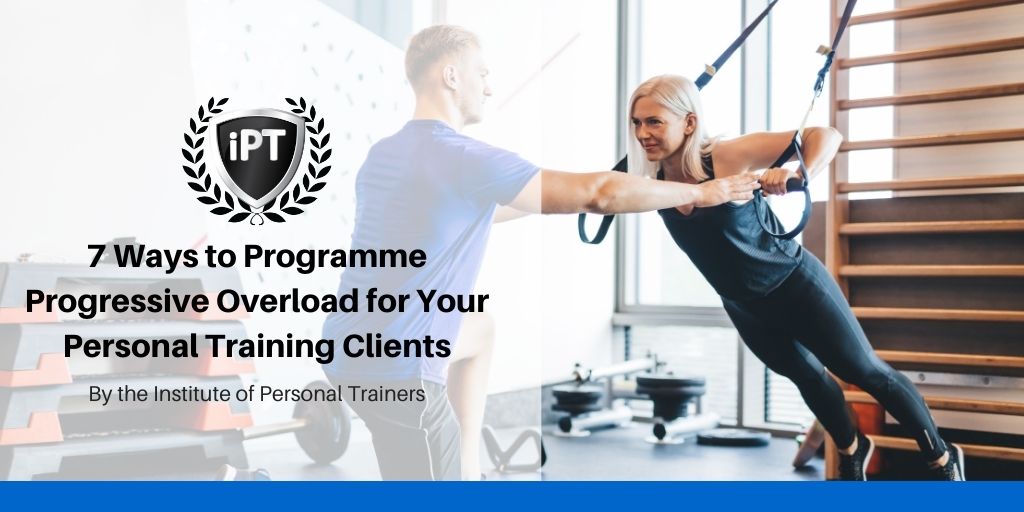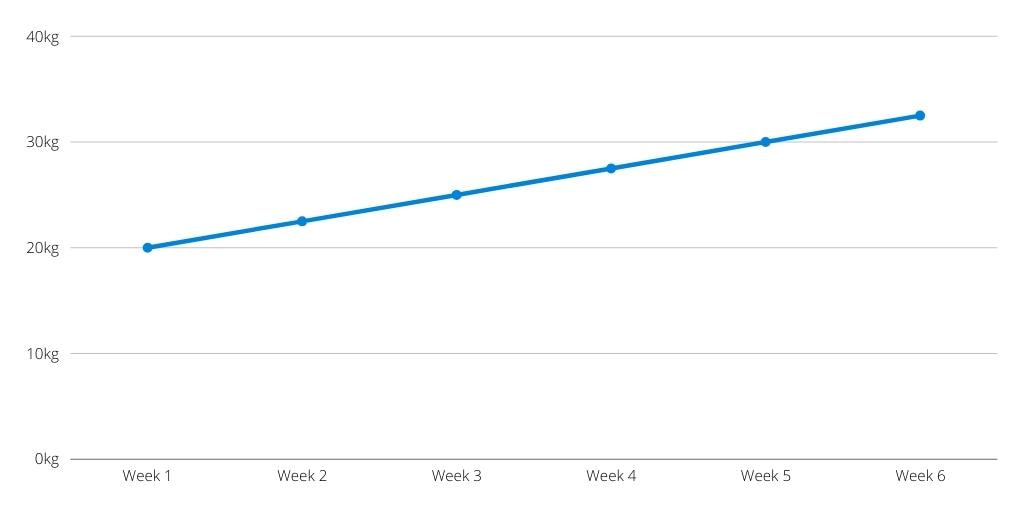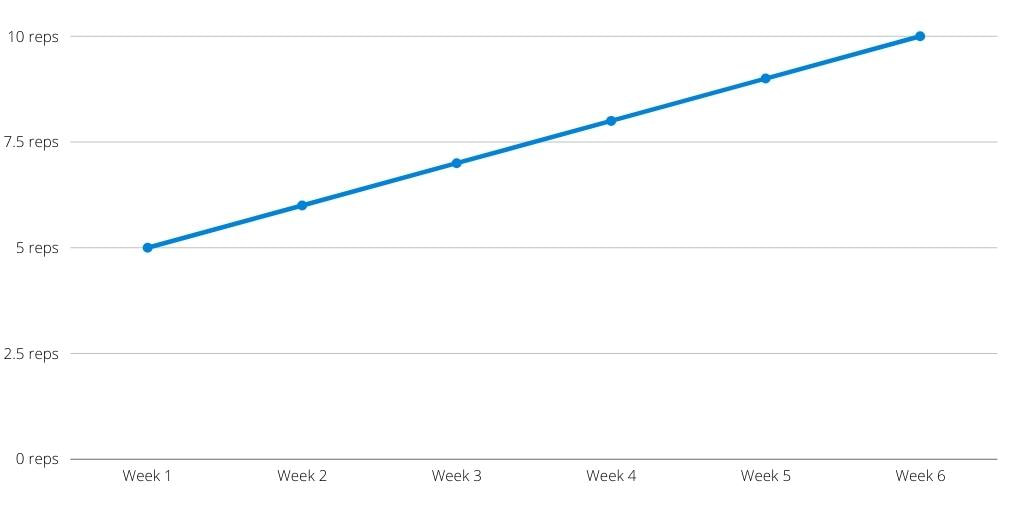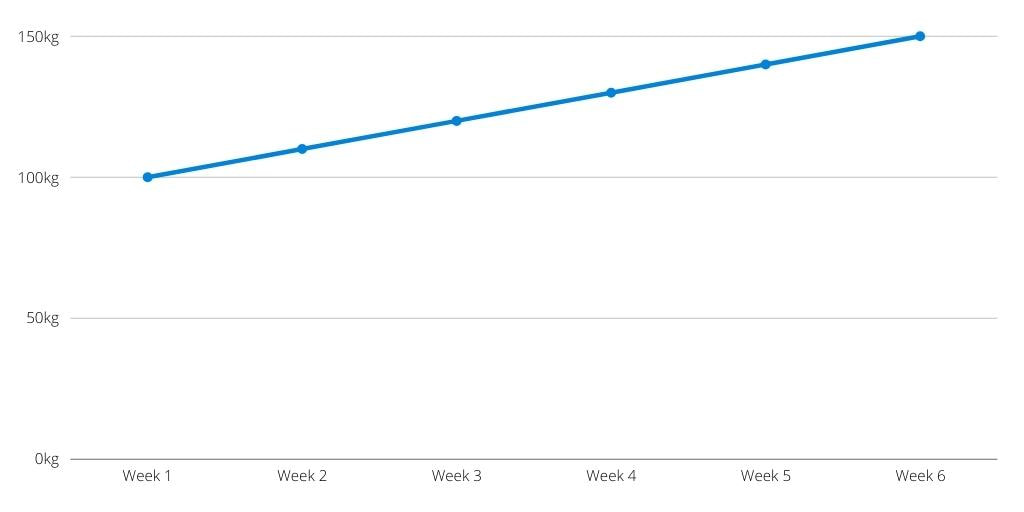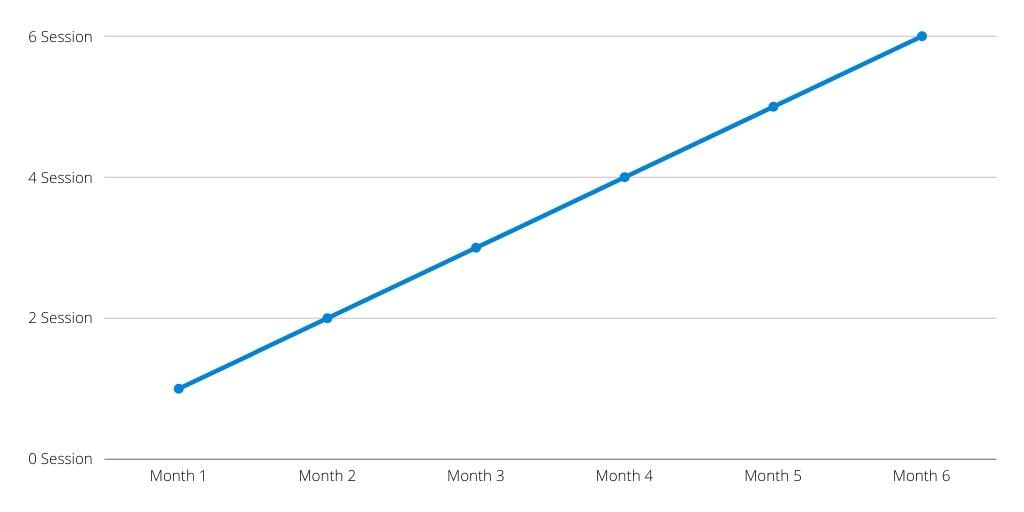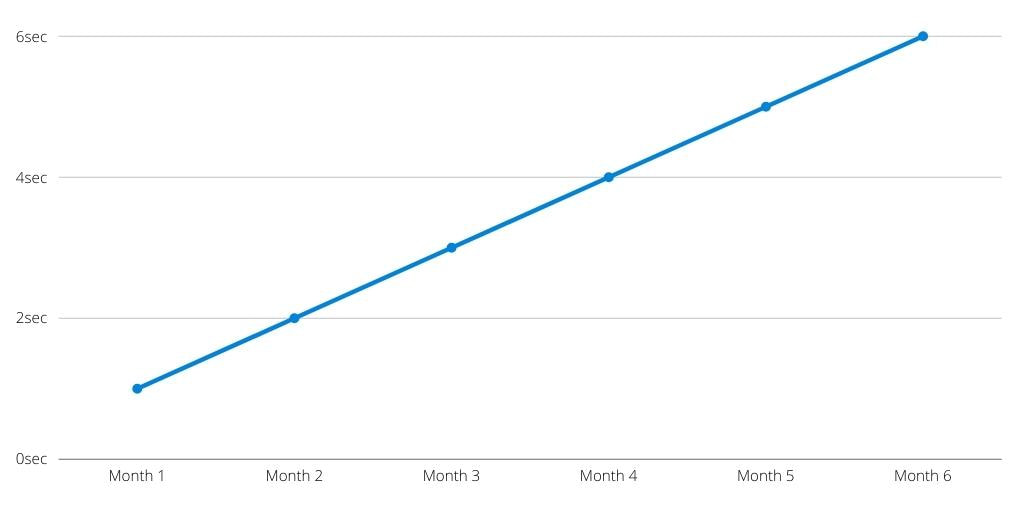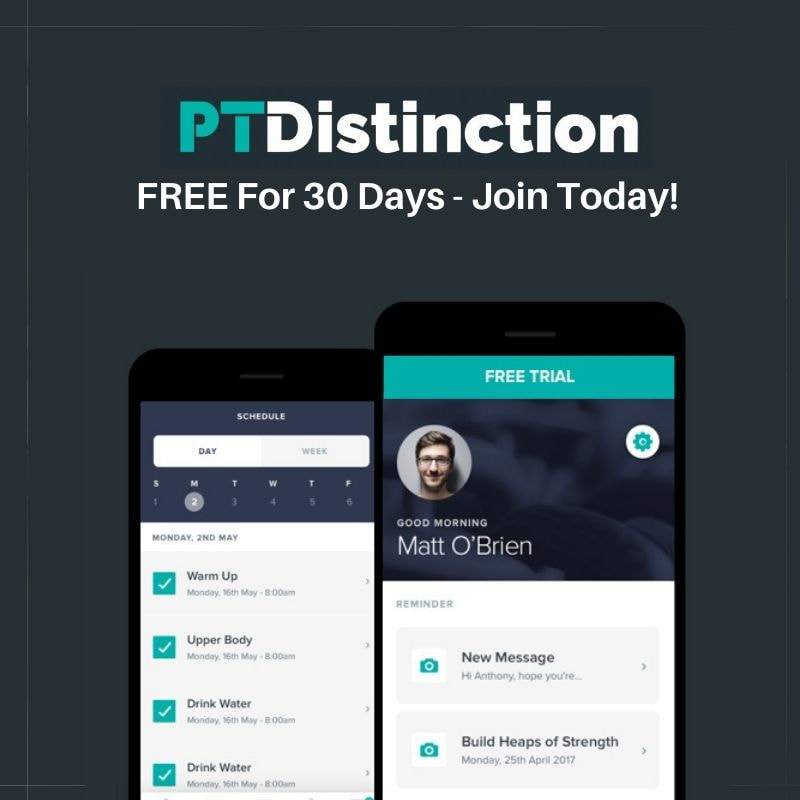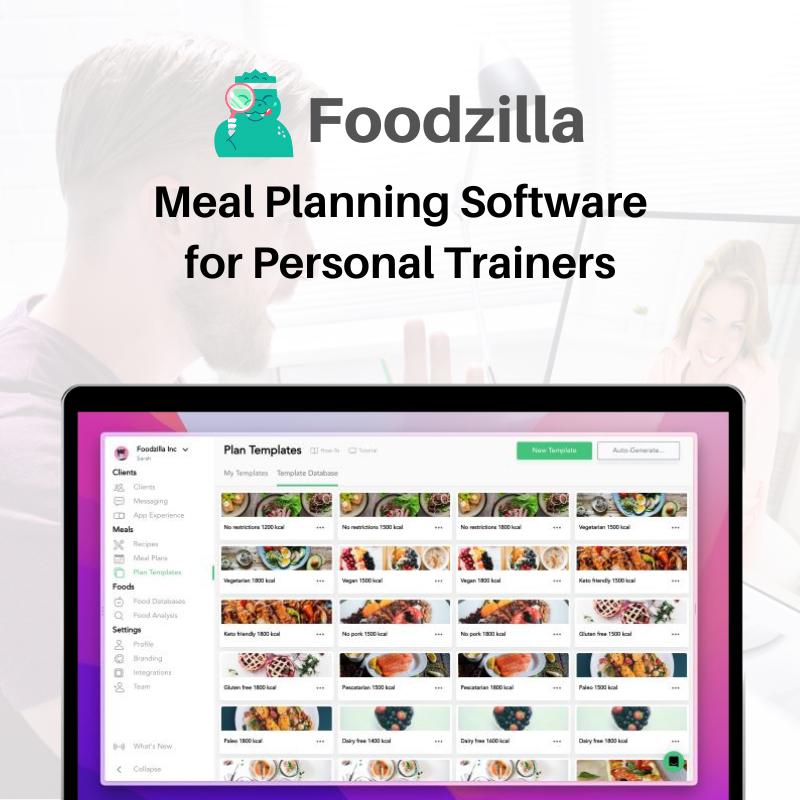|
FREE GUIDE: HOW TO LAUNCH AN ONLINE PERSONAL TRAINING BUSINESS
IN JUST 7 DAYS
✓ The new, better way of launching an online business
✓ The fastest way to create in irresistible offer ✓ A simple system to sell to clients who are interested |
|
As a personal trainer writing a training programme for your clients, one of the fundamental principles to keep in mind is progressive overload. It’s a simple idea that boils down to gradually demanding more from the body over an extended period of time. It’s not just about resistance training. The same progressive overload principles apply to cardiovascular endurance too. Without making these changes, the body will adapt to the stimulus you’re giving it and stop developing. Progressive overload is essential to making sure you help your clients to continue to make progress with their goals. Progressive Overload Is About Physical Progress Physical progress comes in many forms. Maybe your client is an endurance athlete, and for them, their progressive overload is linked to their VO2 max while for powerlifters it will be about how heavy they can lift for 1RM. Whatever the goal, the principle of progressive overload remains broadly the same. But when people train alone in the gym without a plan or a trainer to guide them, they often end up doing the exact same workout - with the same weight, reps and sets - over and over for years and then wonder why they’re not making progress. Say for example your client wants to improve their deadlift and when they start working with you they’re able to perform 8 reps at 60kgs. If every set you programme for that client is 8 reps at 60kgs, that will start to feel too easy. They’ll stop making progress because they’ve become adapted to that load and volume. There are several ways that you can restart their progress. 7 Ways To Programme Progressive Overload Although progressive overload is needed to make improvements, there are plenty of ways that you can programme it for your client. There’s no “right” answer and you’re likely to use all of these over time. 1. More Weight While adding more weight is the first way most trainers will progressively overload their clients' session, it certainly isn’t the only way. Particularly if you’re at a gym where the jumps in weights can be quite large. Some gyms, especially weightlifting and powerlifting gyms, will have fractional plates that you can add to a barbell. But if you’re working with dumbbells in a mainstream gym, your client may be jumping from 5kg to 7.5kg which is an increase of 50%. That’s if your gym even has this weight, many will jump straight to 10kg. So more weight isn’t always the best, or safest option. 2. More Reps This is a simple way to progressively overload a session because it just involves doing a tiny bit more of what your client is currently doing. So if their normal work involves 8 reps of a movement, you’d progressively overload if for their next session you asked them to do 10. It’s attractive because it doesn’t require any special equipment and doesn’t really take much time. 3. Increase Volume Volume is a calculation that you can think about in terms of the amount of work your clients have done. The equation is the number of reps multiplied by the number of sets multiplied by the amount of weight. So if one of your clients can deadlift 100 kg for 5 sets of 5 reps, they’ve done 2500kgs total volume. It’s potentially more sophisticated than simply adding another set at the same weight, but it could be as simple as that. In non-lifting terms, this could be increasing the mileage on a run in the lead up to a race. 4. Increase Frequency This is about adding an extra training session in. As you and your client become adapted to the volume of work in a session, they’ll be able to recover faster. The session which left them needing 2 days to recover a month ago may just be a warm-up now. Adding an extra training session into the week could be a good way to progressively overload them. That session could be with their trainer or done alone if they’re confident they can replicate the movement safely. This is one of the harder ways to progressively overload, simply because it takes more time out of the person’s day and adds quite a lot of volume to their week. 5. Less Rest The period of time in between working - whether that’s lifting or doing intervals of cardio - is the rest period. By making this period of time shorter, the client is getting back to while they’re still somewhat fatigued. They’re able to push through and complete the work with tired muscles, or while still out of breath. Decreasing rest period will increase the intensity of a primarily cardio focused workout, so ensure your client's CV system is ready for it, monitor heart rate when needed. Similarly, in resistance training, giving them less reps between sets will mean they work on fatiqued muscles that can increase risks of injuries for people who aren't conditioned well for that yet. Equally your client will be able to reap physique rewards if they're ready for it. 6. Time Under Tension Slowing the tempo of the lift right down and allowing your client to feel in total control of moving with excellent form, and keeping time under tension and controlling the lift throughout the range of motion. This is absolutely essential if the lift is highly complex, like an Olympic lift, and the goal of the training session is technical mastery. It may be necessary for highly explosive movements to perform only certain parts of the lift at tempo. For example, you might slow a front squat down to develop spatial awareness during the clean. 7. End ROM Strength Working at the end range of motion is likely to be important for developing in those more challenging positions. For example, if your client struggles to touch their chest to the floor during a push-up, you may have them only performing “negative” reps where they lower their weight very slowly and hold themselves in the position they find most challenging. Conclusion There are many ways to progressively overload your clients, but they all come down to the same idea. Doing more work in less time and with better form. There are far more elegant methods to achieve this than simply throwing extra weight on the bar and hoping for the best.
It’s lazy programming to always work on increasing weight with resistance training, and we’d never do the same thing for cardiovascular fitness. With experience, you’ll be able to select a tool for progressive overload while you’re actually in the session, but these are useful tools that you generally will return to. |
Our All In One Platform
Check out out all in one business & marketing platform for personal trainers!
WEBSITE BUILDER | FUNNELS |MEMBERSHIPS | SCHEDULING| EMAIL MARKETING| PAYMENTS| CRM | AI ASSISTANT | SURVEYS
Popular Articles
Trusted Partners
We work closely with some of the best service providers in the fitness industry.
Categories
All
|


